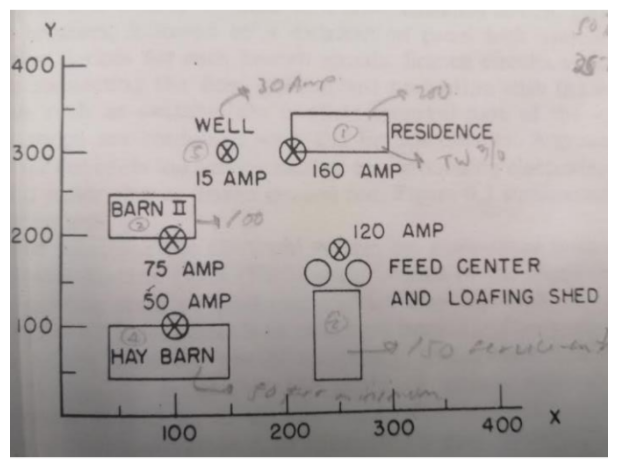
For example, in a factory, you would expect there to be many inductive loads to power machinery and specialised equipment. Industrial electrical loads may be much more varied than domestic and commercial electrical loads. Consider, for example, that most shops will have their lights on all day every day, while most households only turn on their lights when it starts to get dark.Ĭommercial electrical load calculation is vital to the running of an efficient and cost-effective business.

Unlike domestic electrical loads, commercial electrical loads are usually active for longer periods of time. Commercial electrical loads include lighting and air conditioning, for example. There will also be ‘peak times’ for power usage, such as at the end of the day when the residents return from school or work.Ĭommercial power systems are used for premises such as shops, schools, and cinemas. Others are used intermittently, such as the radio or a laptop. Some appliances will be on constantly, like the landline phone or the fridge. The main components in home circuits will be lighting and appliances. There will be different patterns and different times when power usage surges.ĭomestic power systems/domestic electrical loadsĭomestic (or residential) power systems are the circuits you’ll find in a normal household. Imagine the difference in the power used in a home to the power used on a farm, for example. In different power systems, the volume of power used and the peak times for power usage will be quite different. As you read on, you’ll realise why commercial electrical load calculation is so different than for industrial, domestic or agricultural power systems. This affects how a circuit is constructed and balanced by an electrical engineer. Each type of power system will use different electrical loads. In electrical engineering, there are four main types of power system. You also need to have some awareness of electrical load type for commercial electrical load calculation. It’s important to know where reactance will occur to properly balance a circuit as an electrical engineer. This can affect how voltage flows through a circuit. The type of load explains the current pattern you’ll see as the power moves through the component. These components store energy like a battery. For example, washing machines, dishwashers, and vacuum cleaners.Ī capacitive load is a type of load used by capacitor components. Inductive loads are those that have a motor function. For example, toasters, ovens, and fan heaters. Resistive loads include some kind of heating element in the component. These are classified by the way in which they consume energy. There are three types of electrical load. Or, it can be used by electrical engineers to determine the capacity of a circuit.Ĭommercial electrical load calculation is important to make sure your demand billing doesn’t get out of control. This information can be used to set electricity pricing rates by power suppliers. Electrical load explains how much power you use and where it is used. For example, motors or resistors.Įlectrical load is used as a unit of measurement. Other components that form part of your circuit and use power to do their part also count as electrical loads. Similarly, your microwave is an electrical load in your kitchen circuit. For example, a lightbulb is an electrical load when it comes to your home’s lighting circuit. Put simply, an electrical load is any part of a circuit that uses power.
#Calculate the service demand locad how to
In this article, we’re going to explain how to calculate commercial electrical loads and also discuss other considerations for economic business. Increasing your commercial electrical load factor results in lower costs. It does not store any personal data.Everything you need for commercial electrical load calculationĬommercial electrical load calculation is essential to operating a cost-effective and efficient business. The cookie is set by the GDPR Cookie Consent plugin and is used to store whether or not user has consented to the use of cookies. The cookie is used to store the user consent for the cookies in the category "Performance". This cookie is set by GDPR Cookie Consent plugin. The cookie is used to store the user consent for the cookies in the category "Other. The cookies is used to store the user consent for the cookies in the category "Necessary".


The cookie is set by GDPR cookie consent to record the user consent for the cookies in the category "Functional". The cookie is used to store the user consent for the cookies in the category "Analytics". These cookies provide the basic functions and security features of the website, anonymously.

Strictly necessary cookies are absolutely essential for the website to function properly.


 0 kommentar(er)
0 kommentar(er)
